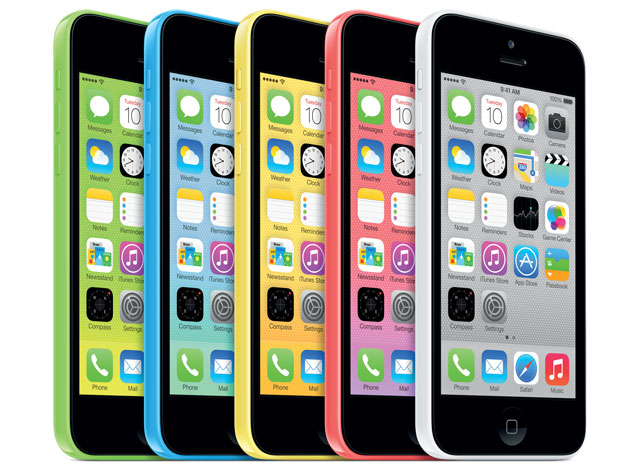 The smartphone market could be reaching another tipping point. Several developments in recent weeks point to potentially big shifts in the fortunes of the major players.
The smartphone market could be reaching another tipping point. Several developments in recent weeks point to potentially big shifts in the fortunes of the major players.
Let’s start with Apple, which on Tuesday took the wraps off not one but two new iPhones, a top-end model, the 5s, and, perhaps more significantly, a cheaper version, the 5c.
But the markets punished Apple the day after the unveiling, sending its share price down by 5,4% in an otherwise bullish market. Investors were spooked by the fact that the 5s had few notable new features beyond the inclusion of a fingerprint reader in the home button. There are worries that the pace of innovation under the late Steve Jobs has slowed to a crawl under Tim Cook.
Investors are also concerned about the retail price of the 5c is too high to attract users in emerging markets on a large scale. Apple has said the 5c will retail in China for 4 488 yuan (about R7 300), making it a phone pitched as a midrange device but carrying the sort of price tag usually attached to high-end phones.
Apple may be hoping brand appeal is strong enough to win over millions of new users in emerging markets, but with excellent and lower-priced midrange alternatives from rivals such as Samsung, Nokia, Sony and Huawei, it’s easy to understand investors’ jitters.
Thanks to the wave of innovation under Jobs, which led to consumer hits such as the iPod, the iPhone and the iPad, Apple became the world’s most valuable company last year, with a market cap north of $620bn. Since then, it’s tumbled by a third.
Facing intense competition from Samsung and other manufacturers that develop phones and tablets based on Google’s Android operating system, Apple looks far more vulnerable today than it has at any time since it launched the first iPhone in 2007.
Google, meanwhile, looks increasingly likely to enjoy the sort of dominance in mobile that Microsoft has historically had on the desktop with Windows. Recent numbers from the International Data Corp (IDC) show that Android smartphone shipments rose by 73,5% year on year in the second quarter of 2013. Almost 80% of smartphones sold worldwide in the second quarter ran Android.
Apple’s iOS, which grew by 20%, was a distant second, with just 13,2% of the market. And BlackBerry, which recently said it was open to the idea of a sale as it battles to recover lost momentum, slipped from third to fourth. With a decline of 11,7% in device shipments, its market share tumbled to just 2,9%. It’s hard to see how BlackBerry is going to survive in its current form.
The dark horse in the smartphone market is Microsoft. Windows Phone’s market share in the second quarter was just 3,7%, but it enjoyed the strongest year-on-year growth of all the major platforms, at 77,6%. It was off a low base, but, like Android, the platform appears to have real momentum behind it.

Microsoft’s acquisition of Nokia’s devices and services business for €3,8bn may have been forced on it. The deal included a €1,5bn line of credit, which Nokia drew on fully almost immediately. The Finnish company may have been in danger of running out of cash — a situation that would have been catastrophic for Microsoft as Nokia is by far its biggest Windows Phone partner. It would certainly explain how Microsoft managed to bag Nokia for less than it paid for Skype.
That doesn’t mean that it’s necessarily a bad deal for Microsoft. Windows Phone is good software and consumers are slowly warming to it. And Nokia, despite its troubles, still makes great hardware — the new Windows Phone-powered Lumia 1020, with its 41-megapixel camera, is an example of this.
As Apple has shown, it’s possible to build a highly profitable niche in the smartphone market. Rather than trying to unseat Google from its dominant position — that’s just not going to happen — this is where Microsoft and Nokia need to focus. With the right execution, they have a good chance of succeeding where BlackBerry looks set to fail.
- Duncan McLeod is editor of TechCentral. Engage with him on Twitter
- This column was first published in the Sunday Times




